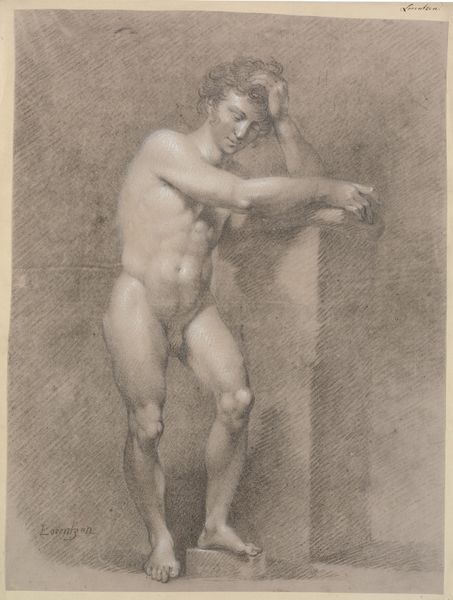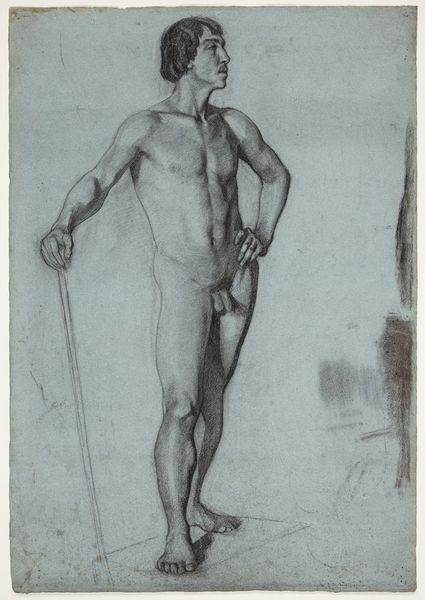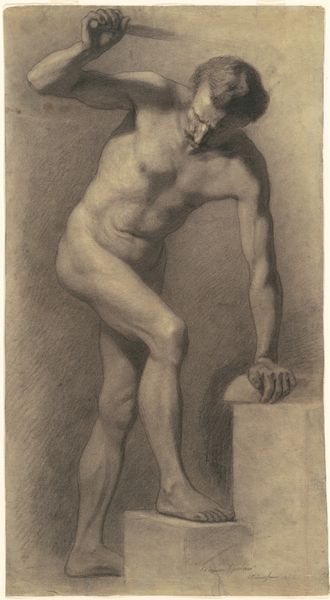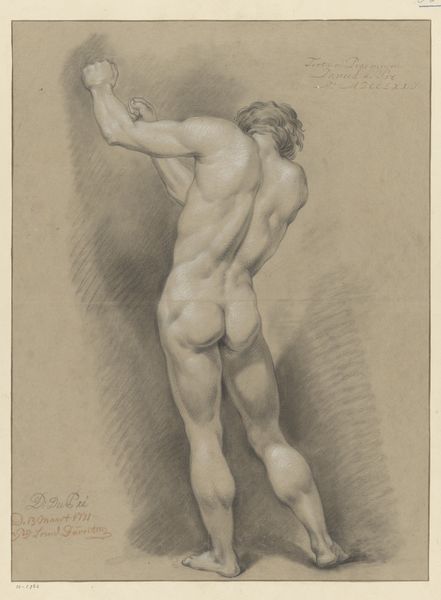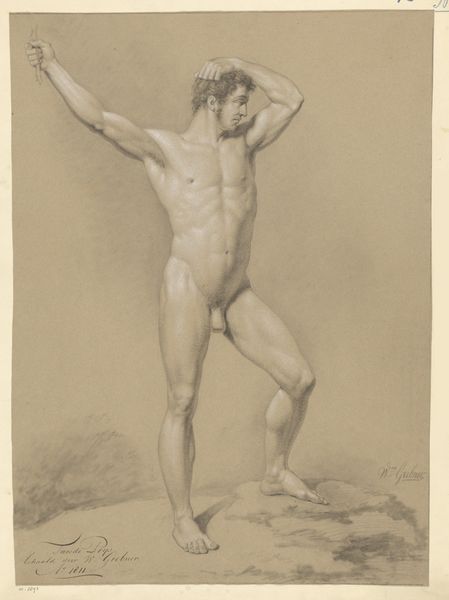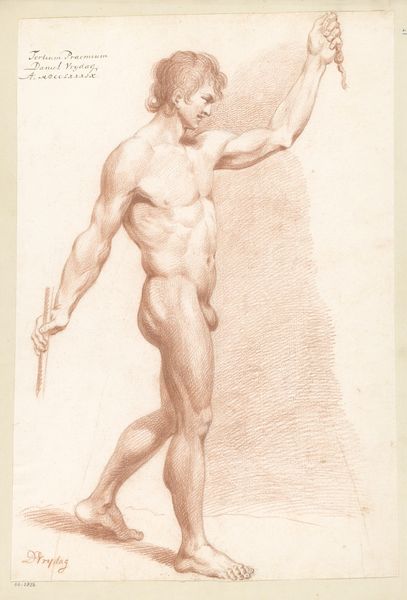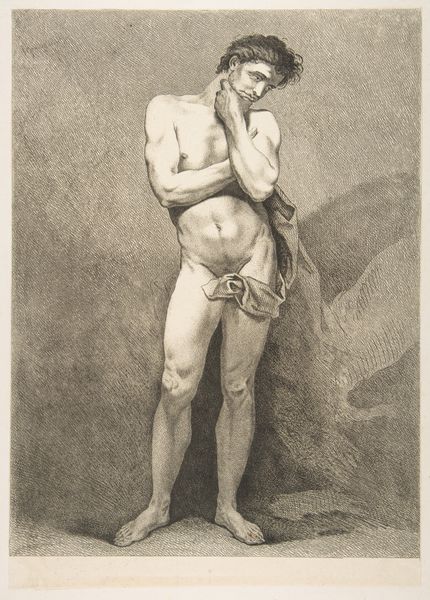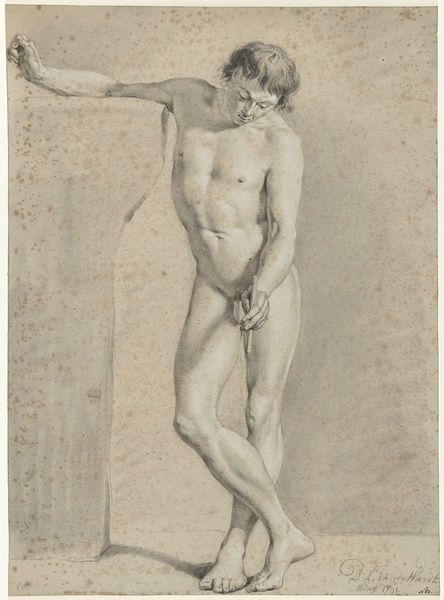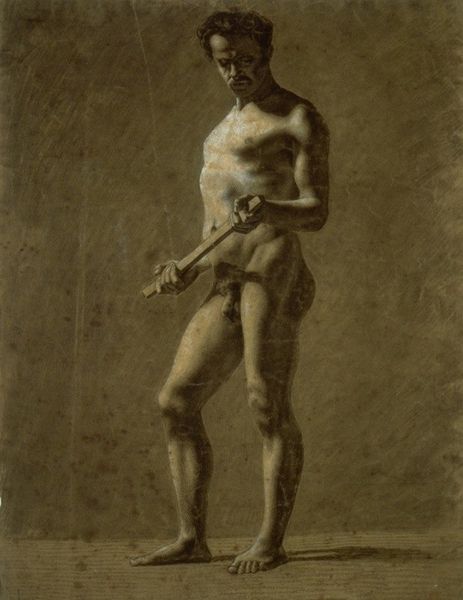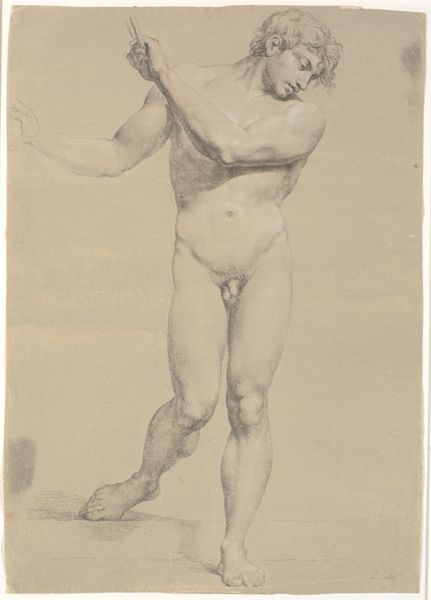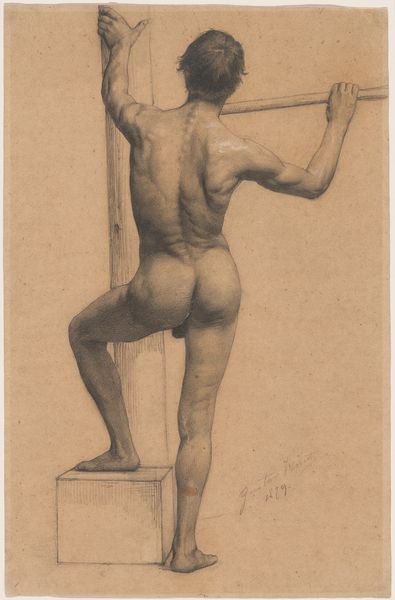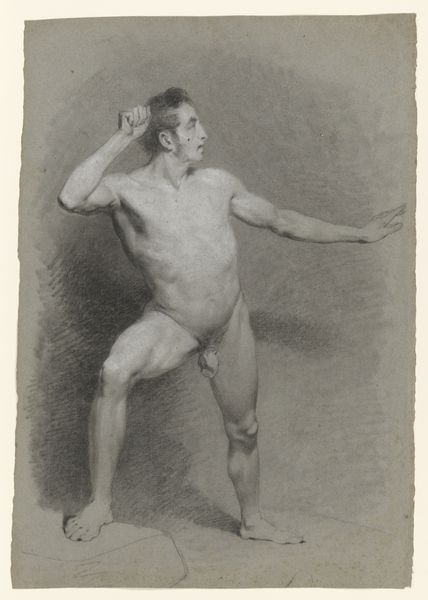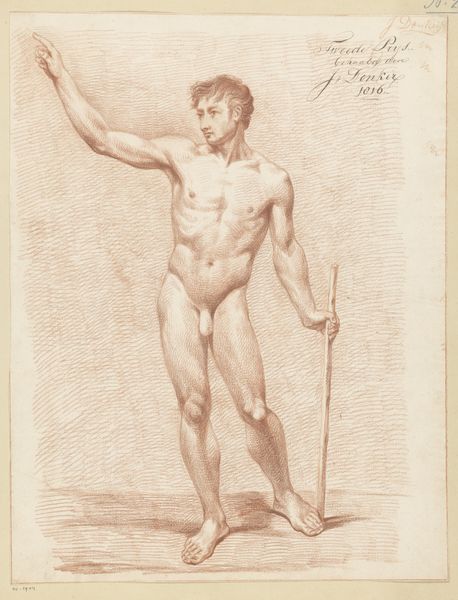
Standing Male Nude (recto); Classical Head (verso) n.d.
0:00
0:00
drawing, paper, charcoal
#
drawing
#
charcoal drawing
#
figuration
#
paper
#
form
#
charcoal art
#
line
#
charcoal
#
academic-art
#
nude
Dimensions: 577 × 448 mm
Copyright: Public Domain
Curator: Before us, we have a charcoal drawing on paper by Paul Emile Detouche titled "Standing Male Nude (recto); Classical Head (verso)." Editor: There's something instantly melancholic about the figure. The muted charcoal, the somber posture... it suggests introspection, even defeat. Curator: The figure's pose—one hand resting heavily on his forehead— certainly evokes weariness. It’s a study in the classical form, meticulously rendered with academic precision. Note the attention paid to musculature, the fall of light. It speaks to a deep engagement with artistic tradition. Editor: Yet, the overall tone feels far removed from the heroic or triumphant nudes we often associate with classical art. There's a vulnerability, a quiet humanness that subverts the expected grandeur. The symbolic associations shift as a result; he's not a god, just a man seemingly burdened by thought. And there's something incomplete about the piece. Curator: True, there’s a psychological complexity here. He’s holding what appears to be a simple staff— a common trope— but the symbol has layers. It speaks to ideas of support and direction, leadership, authority, but here its potential is unfulfilled; adding to the piece's pervasive feeling of potential undone. Editor: The unfinished sketches in the background only emphasize that. They suggest ideas gestating, potential forms never quite realized. They lend another dimension of unfulfilled narrative to the drawing. Curator: It resonates, doesn't it? Detouche's treatment of the nude avoids idealization, choosing instead to convey a more human, complex emotional state, echoing how symbolism allows for different meanings and interpretations depending on social and historical settings. The body itself becomes a vessel for emotion. Editor: Yes, and this subtle manipulation of form and symbolic motifs ultimately makes it quite powerful, turning what could be a simple academic study into something profoundly moving. A glimpse into human fallibility, rendered with skillful restraint.
Comments
No comments
Be the first to comment and join the conversation on the ultimate creative platform.
